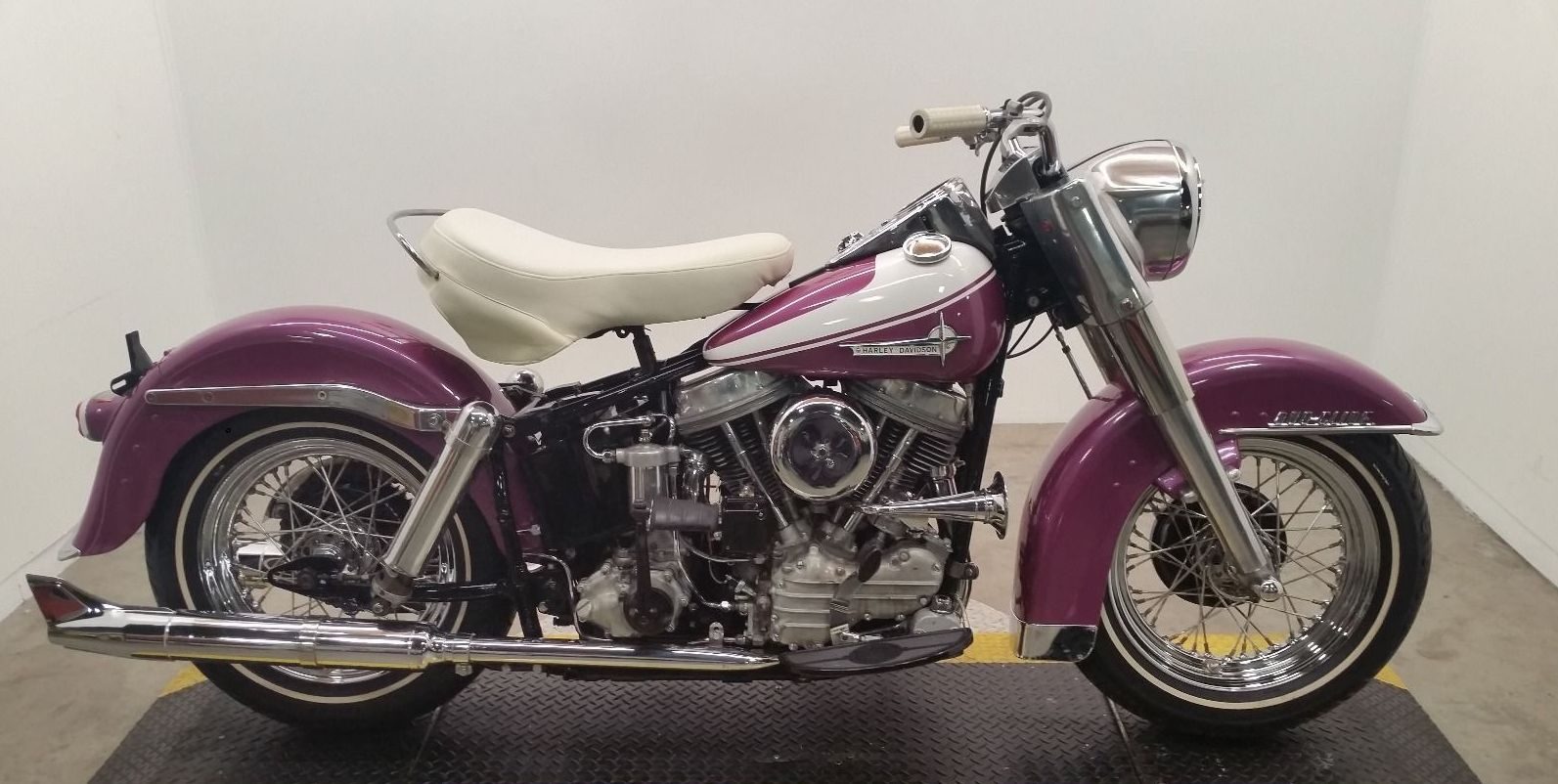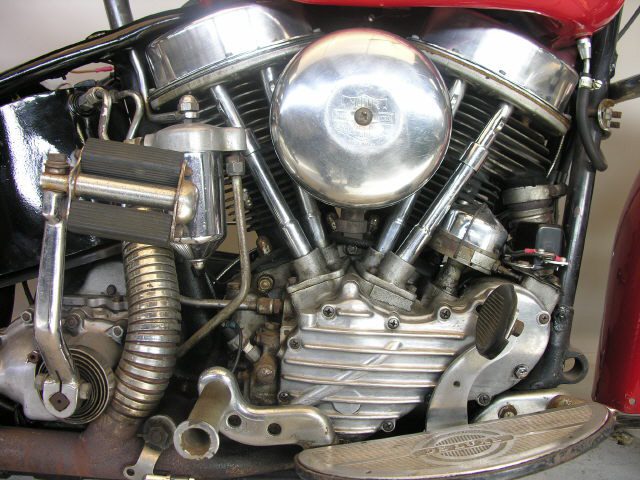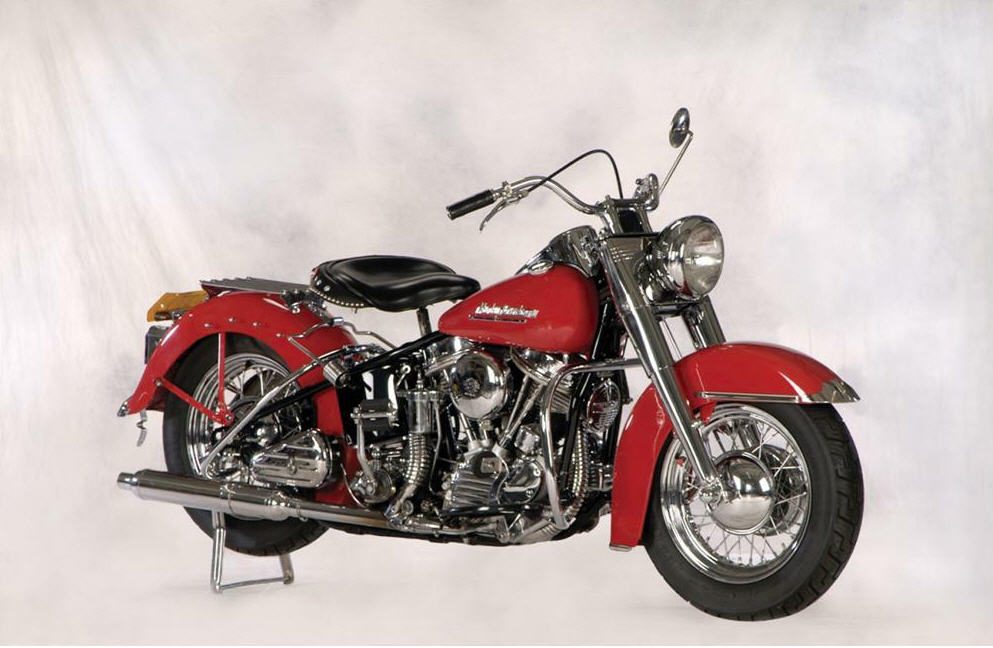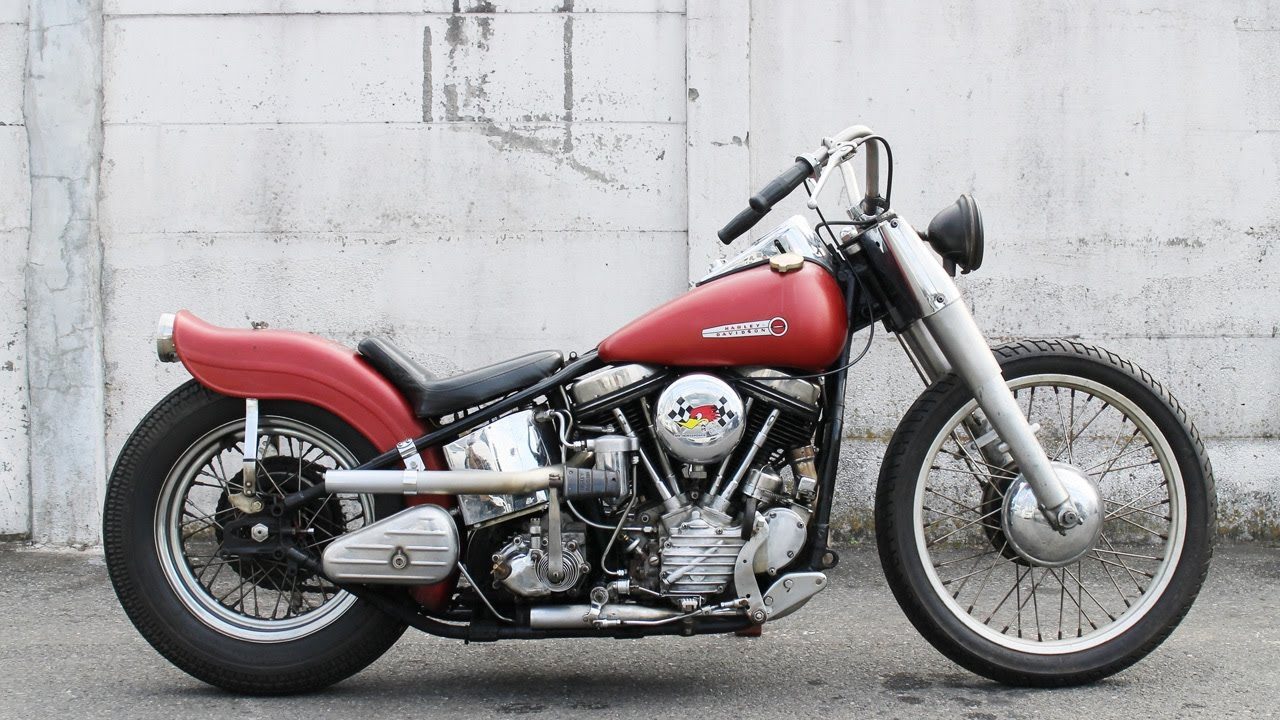Throughout the history of motorized vehicles, a number of engines have become famous for being the best of their generation. Even motorcyclists have heard of a Chevy 427 small block V8, the engine of the Corvette, and how it became the preferred engine of performance shops across the nation. While there are a variety of great motorcycle engines, from Honda’s dominant RC213V to the classic BMW R32 flat-twin boxer from 1923. However, if you wanted to talk about the most badass engines, well, that’s an entirely different discussion, and almost everyone will agree that the All-American Harley-Davidson Panhead was the most badass of them all.
While the previous generation Knucklehead was no slouch and is still fervently defended as one of the most reliable engines ever made, it was an engine that had been around since 1936. It saw service in the Second World War in the Harley-Davidson WLA patrol bike, and many young servicemen were able to get their first taste of “A Real Harley-Davidson” through their time overseas. As war sometimes necessitates, a lot of technological advancements were made during WW2, with some of the best engineers and designers pressed into service.
After the war, these engineers and designers were able to bring with them new and exciting knowledge on everything from new metal alloys to engine design. Many servicemen had finished their release procedures, and flush with a little cash in hand, many were looking to kickstart the American economy back into high gear, with many finding jobs working on the new, expanded American highway system.
And so, as two fates, one of the engineers, the other a new, young fanbase of the Harley experience, powered towards each other, they finally collided in 1948.
The Panhead’s Early Years
The Panhead, or more correctly engine code F for the 74 cubic inch version and E for the 61 cubic inch version, was such a revelation at the time it came out in 1948 that it rocked every manufacturer from Triumph to Indian and back again. Using the ultra-reliable, war-tested base transmission and bottom end crank of the Knucklehead, the Panhead took the iron cylinders, heads, and radiator fins of the WLA and chucked them into the bin. Instead, new aluminum alloys replaced them, with much higher heat efficiency, keeping the engine as a whole cooler.
With the new alloy cylinders and heads, a new oil pump was designed to improve flow and lubrication for the higher engine speeds the new F’s and E’s could maintain. Even during the war, the WLA’s were known to have a head-leak issue, and so, to better contain the oil and improve flow, the FL had aluminum heads in the shape of an inverted pan. New pushrods were designed to activate the valves atop the cylinders, based off of the crank.
The Panhead was born.
It wasn’t all right wrist and ride into the sunset, though. The first engines with the new alloys would expand as they got warm, and when the piston had a nearly four-inch stroke, that expansion could become critical. Add on to that that the further away the valves are from the cylinder base, there was an exponentially higher chance of valve lash, especially with pushrods. This was partially countered with hydraulic tappets that kept the valve clearances correct, but they too were prone to wear and heat expansion as they were placed at the top of the engine, where they became oil-starved.
It wasn’t until 1953, 5 years into its life, that the Panhead’s last major hurdle, that of the tappets wearing out extraordinarily fast, was solved. It was one of those “Well, why didn’t I think of that?” type solutions as well, where an engineer was looking at the engine and trying to solve the tappet oil-starvation problem, before realizing that it was simply easier to move the tappets. A couple of weeks later, a new FL high compression engine with the tappets placed in the deep oil of the crankcase was prototyped. That engine passed all the tests that could be thrown at it, but it also could not be translated down into the E series engines.
Thus, 1952 was the last year that those who were fans of the 61 c.i. Harley engine had a model available with it. All that remained was the new FL, a 74 c.i. 45 degree V-twin with overhead cams and automatic valve tappets and 62 lb-ft of torque accompanied by 55 HP on hand.
The 1950s
For most of the 1950s, the Panhead engine was unchanged. There were, however, options you could choose to modify the engine. One of the most famous is engine code FLE for 61″ cams and an M61 carburetor, known in Harley-speak as “cop cams” as it was designed for use on law enforcement patrol bikes. The smaller cam and carb made it much easier to ride smoothly at lower speeds, such as parade duty. The FLH, on the other hand, was known as the Super-Sport Panhead, the highest compression Panhead you could get at 8.0:1, instead of the 7.25:1 that was on the standard models.
There were also changes made to how the transmission was engaged. In the older days of motorcycle riding, it was easier to put the clutch on the left foot, and the shifter on the left handlebar. This allowed for direct linkage to the clutch, and a cable from the grip pulled the sequential gearbox in the right direction for the up or down-shift. In 1958, however, this was switched up, as the motorcycling world realized that many clutches, if designed right, could be either hydraulically activated or cable activated. The shifter was moved to the left foot., the clutch to the left hand. This gave rise to the inclusion of the code -F at the end of many of the engines, to denote foot shifting, such as the Super-Sport now being known as FLHF.
It was in the 1950s as well that the mile-crushing durability of the Panhead came into its own. Many riders could set off for days, or even weeks, of riding, only needing to stop for fuel or food. The continental rally style of crossing from coast to coast and back again became the favorite pass-time of the Harley-Davidson owner, and many Panhead engines have several hundreds of thousands of miles on them.
The 1960s
While the Panhead only really existed for half to the 1960s, the fact that many used Harley’s with Panhead engines in them started to appear gave rise to one of the biggest surges in chopper-culture history. As well, other modification styles started to see a surge in popularity, especially the low rider and bobber styles of Harleys. It was around this time as well that Harley-Davidson themselves started to really get involved with the aftermarket modification scene, watching what was being done and incorporating some of the ideas into newer bikes.
As well, in the final years of the Panhead, electric starters were introduced. In 1964 and 1965, this new feature, which replaced the sometimes leg-shattering kickstart the heavy 74 c.i. engines needed, gave rise to a new name for the final years of the bikes that carried the engine: Electra-Glide.
These new bikes, however, did not sell all that well compared to the older Panhead models. It was seen as a bit of an affront to the history and constant evolution of the engine to take away one of the most basic of things, that of the kickstart, from a rider. These were the riders that had bought into the Panhead after the war, the young servicemen that were now seasoned Harley owners and knew exactly what they liked, and how they liked it. To this day, even, some of those that are still with us tell us that the original rigid-rear, hydraulic-fork, kick-started, floor clutch Panheads are the only real Harleys around.
The Specs
Despite having two engine sizes for the first part of its life, the Panhead, as it is known and loved today, refers to the 74 cubic inch variant with high compression, the FL style engine.
A solid iron cylinder base and transmission case formed the familiar bottom of the engine. Two cylinder heads rose up at 45 degrees from that base, made of high-strength aluminum alloy. Each cylinder had a bore of 3 and 7/16 inches, with a stroke at 3 31/32 inches.
Total piston displacement was 73.66 cubic inches. The crank has only one crankpin, with both pistons using fork-and-blade connecting rods.
Power is either at 55 HP and 62 lb-ft of torque for the FL, or 60 HP and 65 lb-ft of torque for the FLH.






